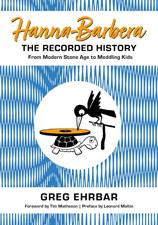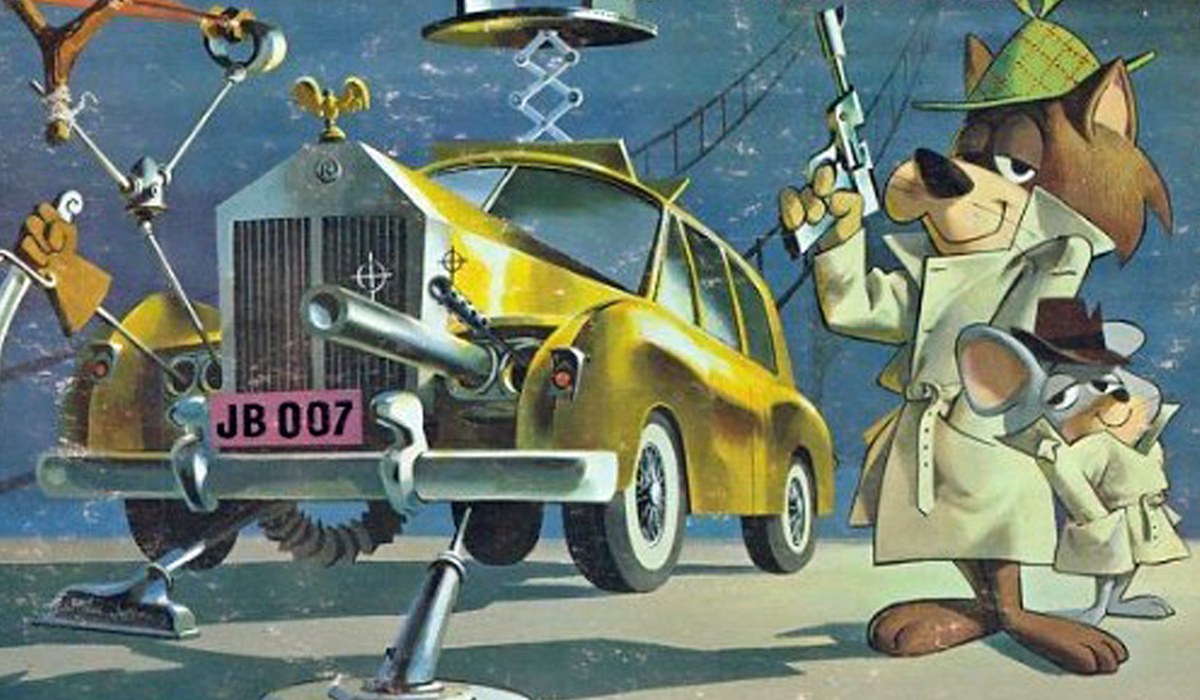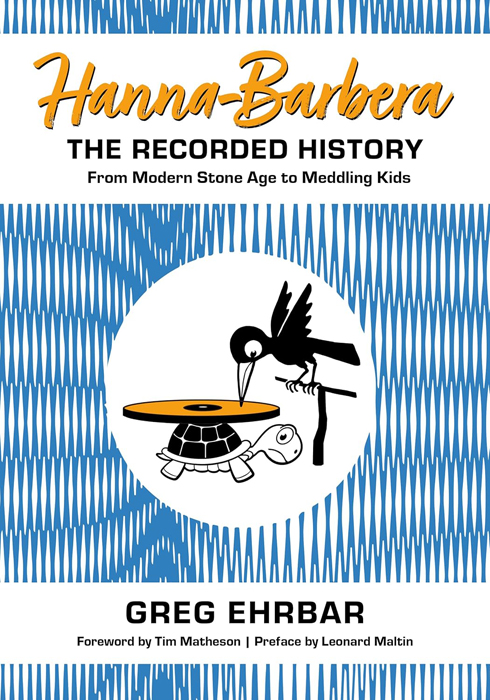 By Greg Ehrbar
By Greg Ehrbar
University Press of Mississippi
August 27, 2024
344 pages
Softcover/Hardcover
$30.00/$110.00
Greg Ehrbar has a wonderful blog over at the Cartoon Research website, called Animation Spin. For over ten years now, Ehrbar has been discussing the history of animation-based vinyl records. Each column, he picks a topic and explores the various releases of a given character or subject, or perhaps a single record of particular interest. I discovered Animation Spin several years ago, which is what largely led to my developing a fascination for those black vinyl discs that had been a big part of my childhood.
I loved playing records when I was young (we are talking about the 1970s and early 1980s), often with my mother or siblings. We did not have a vast amount of children’s records, but we had quite a few, and the ones we had got a lot of play, like one called Nutty Numbers – a compilation of silly novelty songs. Then there were the amazing Power Records, including their exciting book & record sets; these told stories of comic book and science fiction characters, from Superman to Space: 1999. We also had a number of the Disney book & record sets, of which I was very fond. However, I knew there were a lot more records out there, based on house ads on the records or books themselves, as well as seeing store displays. However, I was too busy buying comic books to really focus on records at that time, as curious as I was. And by the time I was a teenager, vinyl records were being largely replaced by CDs, and then they were nearly forgotten, until records saw a resurgence in popularity over the past decade or so.
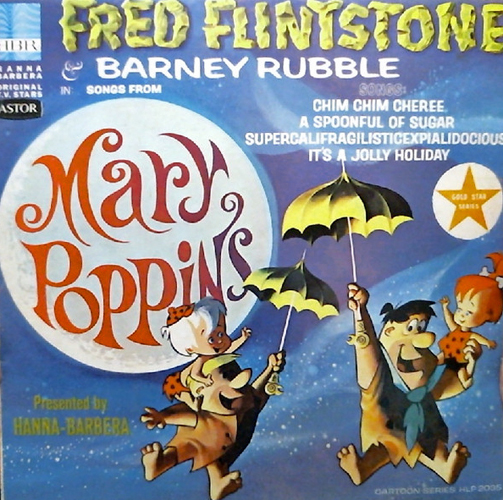 Record collecting in the 21st Century has been aided immensely by sites such as eBay and Discogs. I think it was during an eBay browsing session several years ago that I spotted an incredible image of a record cover: Fred Flintstone & Barney Rubble In Songs From Mary Poppins. When I saw the cover for that one, it truly astounded me. Not only did it confound me by appearing to combine Hanna-Barbera and Disney, but it had a strikingly beautiful painted cover, with Fred and Barney clinging to umbrellas with their kids in front of a full moon. And then there was the logo in the upper left corner: HBR – Hanna Barbera Records!
Record collecting in the 21st Century has been aided immensely by sites such as eBay and Discogs. I think it was during an eBay browsing session several years ago that I spotted an incredible image of a record cover: Fred Flintstone & Barney Rubble In Songs From Mary Poppins. When I saw the cover for that one, it truly astounded me. Not only did it confound me by appearing to combine Hanna-Barbera and Disney, but it had a strikingly beautiful painted cover, with Fred and Barney clinging to umbrellas with their kids in front of a full moon. And then there was the logo in the upper left corner: HBR – Hanna Barbera Records!
What? Hanna-Barbera had their own record label?! And their records told original stories, had original music, and often (but not always) had the original voice actors? I needed to learn more! That led me to Ehrbar’s blog, where he had written about the remarkable album in question, and many more. And yes, it turns out that H-B ran their own record company from 1965 through 1966. Over just two amazing years, they put out over thirty albums featuring many of their characters, plus a few other projects, like the first album featuring TV’s Avengers. They also produced numerous 45s (smaller records running at 45 revolutions per minute, typically with one song on each side) featuring contemporary music artists singing popular music, or studio musicians doing children’s songs. I spent a few days reading all of his columns, catching myself up on HBR, and also numerous recordings based on other animation properties. And the more I read, the more I wanted – nay, needed! – a record player. Also, of course, I really wanted to buy all those records that Ehrbar kept talking so much about, as well as others that I had missed getting in my childhood.
As luck would have it, record players were being produced in big quantities again, as younger people had discovered the warm tones of vinyl records and their cool collectability. Plus, there were all those middle-aged and older folk who had gotten nostalgic, I suppose. During a visit to my mother’s home one holiday a few years ago, my wife and I perused Mom’s old record collection, and that led to my wife agreeing that we should really get a record player. And that’s all I needed to get started on… my beautiful record collection!! I now have piles of vintage children’s LPs, 45s, and book and record sets – maybe one of the better collections around. And so, what I’m saying is, well… it’s largely Greg Ehrbar’s fault.
But thank you for that!
Fortunately, Ehrbar is not only found online. With co-author Tim Hollis, he wrote a 2006 book called Mouse Tracks: A History Of Walt Disney Records, a must-read for anyone with an interest in the subject. After I read that book, I found myself hoping that Ehrbar would write more books, summarizing and expanding on his Spin columns. Choosing Hanna-Barbera records as a topic seemed a natural one, so this year I was very excited to find out that Ehrbar had decided to do just that, apparently with his wife’s encouragement. After all, if he didn’t do the book, who would? It simply had to be done.
And I am so glad that it did get done. Hanna-Barbera, The Recorded History is a wonderful read, charting far more than just the Hanna-Barbera Records label, and not just H-B records in general. Ehrbar tells the whole history of Bill Hanna and Joe Barbera and their partnership, tracing their younger days, meeting up at MGM, creating Tom and Jerry, and then – with the closure of the MGM cartoon unit – almost out of desperation founding what would become the largest animation company in the world. That animation studio and its characters, by the way, are very near and dear to me; and Ehrbar covers their entire history. Not every H-B television show gets a mention, perhaps, but a surprising amount do. This book covers a lot of ground.
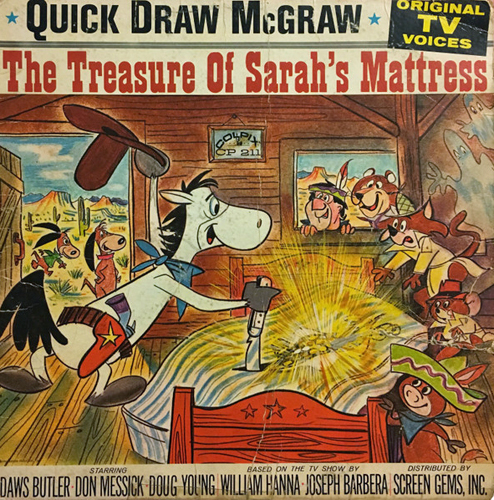 The first records that could be considered “Hanna-Barbera” records predate their cartoon studio. Tom and Jerry got numerous story records, despite being based on cartoons that were largely dialogue-free. There was also a record for “The King Who Couldn’t Dance,” a song featured in Gene Kelly’s film Anchors Away, which had a special animated sequence with Kelly and Jerry Mouse. It was naturally the television cartoons of Hanna-Barbera that opened the floodgates for records based on their properties, starting with the Colpix release of the Ruff and Reddy soundtrack album in 1959.
The first records that could be considered “Hanna-Barbera” records predate their cartoon studio. Tom and Jerry got numerous story records, despite being based on cartoons that were largely dialogue-free. There was also a record for “The King Who Couldn’t Dance,” a song featured in Gene Kelly’s film Anchors Away, which had a special animated sequence with Kelly and Jerry Mouse. It was naturally the television cartoons of Hanna-Barbera that opened the floodgates for records based on their properties, starting with the Colpix release of the Ruff and Reddy soundtrack album in 1959.
Ehrbar tells us all about that album and many, many more. Colpix went on to do several other soundtrack and original song or story records featuring the early H-B stars, including the original tale Quick Draw McGraw: The Treasure of Sarah’s Mattress. Ehrbar then goes on to AA/Golden Records (who produced records such as Huckleberry Hound For President and Songs Of The Flintstones), and it is not until the tenth chapter that we even get to covering the Hanna-Barbera Records label. The many chapters on that company’s two-year history give us the background on such records as Robin Hood Starring Top Cat, Jonny Quest In 20,000 Leagues Under The Sea, and Secret Squirrel And Morocco Mole In Super Spy, and all the rest. In the text, we find out about how Yogi Bear teamed with the Three Stooges, and how Fred Flintstone met Bill Dana’s Jose Jimenez character in elaborate LPs. And, of course, we discover how Fred and Barney got messed up with Mary Poppins. After all that, further chapters cover Hanna-Barbera teaming with Peter Pan Records, Columbia, Rhino, and other labels, plus H-B’s forays into feature films of both the animated and live action varieties, which also resulted in soundtrack albums. Ehrbar goes right into the cassette and CD era, so no stone is left unturned. This is really the whole recorded history.
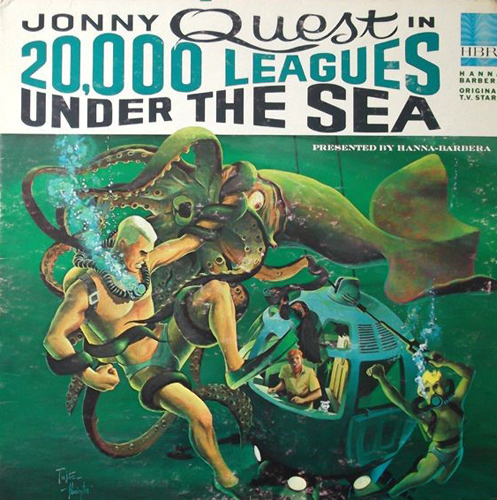 Erhbar includes information on each releasing company, how much (if any) of an original soundtrack was used, the performers, and the producers. He especially highlights when characters had their original voices or not (e.g. Daws Butler played Fred Flintstone a time or two on records, after initially losing the part on television to Alan Reed after Butler did the pilot film), and also examines the music used on each record and where it came from. And along the way, he also incidentally recounts history of old-time radio, covers numerous figures in the animation community, and has countless digressions concerning other labels, other studios, pop culture, pop music, and related topics. He even finds ways to work in information on non-H-B properties, like The Monkees, The Archies, and the records by the kids from the Brady Bunch. It all ties together. Even when he seems to go slightly off on a tangent, it all feels essential to the story he is telling. After all, history is not made up of discrete topics, each topic is related to everything else around it. I loved every word of Ehrbar’s text, and was fully absorbed into the tale of Hanna-Barbera records and the world in which they were created.
Erhbar includes information on each releasing company, how much (if any) of an original soundtrack was used, the performers, and the producers. He especially highlights when characters had their original voices or not (e.g. Daws Butler played Fred Flintstone a time or two on records, after initially losing the part on television to Alan Reed after Butler did the pilot film), and also examines the music used on each record and where it came from. And along the way, he also incidentally recounts history of old-time radio, covers numerous figures in the animation community, and has countless digressions concerning other labels, other studios, pop culture, pop music, and related topics. He even finds ways to work in information on non-H-B properties, like The Monkees, The Archies, and the records by the kids from the Brady Bunch. It all ties together. Even when he seems to go slightly off on a tangent, it all feels essential to the story he is telling. After all, history is not made up of discrete topics, each topic is related to everything else around it. I loved every word of Ehrbar’s text, and was fully absorbed into the tale of Hanna-Barbera records and the world in which they were created.
Jonny Quest himself, Tim Matheson, provides a Foreword, while old favorite animation booster Leonard Maltin writes a Preface. The book is rounded out by extensive notes, a detailed discography, bibliography, and index. The only thing I would change would be to have more images, and to have them be in color, but I am sure there were logistical or practical reasons that the book was done as it was. As it is, the over 140 black and white images do a good job of helping to tell the story. In any event, this book was a joy to read and comes highly recommended.
